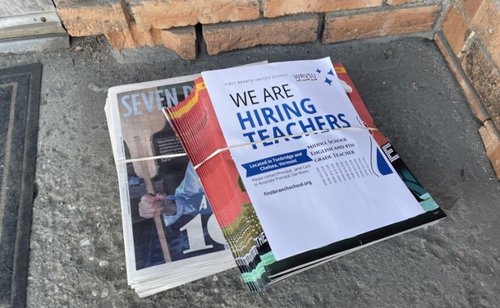Education Department approves all requests to extend ESSER spending deadlines – By Kara Arundel, K-12 Dive
States and districts with spending extensions have an extra 14 months beyond the spending deadline to liquidate their allocations.
Spending extension requests were submitted for every allocation under the Education Stabilization Fund available for K-12. Those allocations include ESSER, Governor’s Emergency Education Relief and Emergency Assistance to Non-Public Schools.
The Education Stabilization Fund was established by the Coronavirus Aid, Relief, and Economic Security Act, or CARES Act, at the onset of the pandemic in March 2020. Subsequent allocations to the fund were delivered through the Coronavirus Response and Relief Supplemental Appropriations Act, or CRRSA Act, and the ARP Act.
Collectively, the nearly $200 billion in flexible federal funding supported many pandemic recovery activities in education. With the earlier funds, schools targeted efforts to safely resume in-person learning after pandemic-related building closures and to plan for school infrastructure upgrades. With later appropriations, schools focused on tutoring, engagement and summer programs for academic recovery.

To find teachers this year, some Vermont districts are going the extra mile — literally – By Lola Duffort, Vermont Public Radio
There’s a nationwide teacher’s shortage, and Vermont is no exception. The first day of school is just a week away, but on the job site where most school districts advertise open positions, you can still find well over 200 postings across the state.
With few candidates applying — especially in more rural districts — administrators are being forced to get creative.
And so, on a sunny afternoon earlier this month, Janet Cash, a principal at the First Branch Unified School District, took to the streets of Barre City. Blue painters tape in hand, she pounded the pavement — popping into shops, posting pamphlets on bulletin boards and chatting with just about anyone friendly enough to listen about the job openings in her district.
First Branch is about 30 minutes south of Barre. It serves the rural towns of Chelsea and Tunbridge. Cash, who recently came to the district from New Jersey, is pretty proud of its two schools. They have robust community partnerships, outdoor education programs, full-day preschool and aftercare.

Photo by Lola Duffort, Vermont Public
School choice and a history of segregation collide as one Florida county shutters its rural schools By Kate Payne, AP News
Tens of thousands of students have left Florida’s public schools in recent years amid an explosive expansion in school choice. Now, districts large and small are grappling with the harsh financial realities of empty seats in aging classrooms.
As some districts are being forced to close schools, administrators are facing another long-avoided reckoning: how to integrate students in buildings that remain racially and economically segregated.
In the Florida panhandle, one tiny district plans to consolidate its last three stand-alone elementary schools into one campus because there aren’t enough students to cover the costs of keeping the doors open. But the Madison County School District’s decision to do so has exposed tensions around race in a community where for years some white families have resisted integrating public schools.

Indiana revises high school diploma overhaul after pushback. Here's the new plan – By Rachel Fradette, WFYI
Indiana walked back its original draft of future high school diplomas following mounting pressure from educators, higher education leaders and the public.
Now, there will be one, new base diploma and several seals for students to acquire as they decide whether or not to pursue college, a job or trade or a military career.
Most existing diplomas — the Core 40, honors and technical — sunset with the Class of 2028. This latest proposal incorporates parts of those diplomas through seals, including a version of the honors diploma.
State Board members praised the department for revisions to the diploma but also how feedback was managed. More than 8,000 comments were submitted on the initial diploma plan that included two separate degrees.












